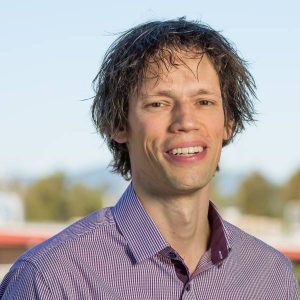Mineral Technologies
One on one with Thomas Romeijn
PhD student working at Mineral Technologies

An opportunity too good to be missed. Thomas Romeijn speaks to IMCRC about the role his PhD plays in finding 3D printing solutions for precision-engineered mineral separation and mining equipment.
Q. What is your background, and what led you to take up a PhD position for this project?
A. I studied mechanical engineering at the University of Twente in the Netherlands and had the opportunity to study overseas at Deakin University in Geelong. After that, I decided to travel around Australia for a year and ended up doing some drafting for a company on the Gold Coast, which is now the same company that I’ve been working at for almost 10 years – Mineral Technologies.
I always wanted to do a PhD after university, as I wanted to push myself a little bit more, but I found myself employed in Australia 10 years ago. My background is in mechanical engineering, where there is a lot of steel work. So when there was an opportunity to pursue a research project at Mineral Technologies that revolved around plastics, I quickly put my hand up. Doing a PhD now is probably not the best time as my second child is just turning one, but from what I’ve heard, there is never an ideal time, and this was an opportunity too good to be missed.
Q. Tell me a bit about the project, and what is your role in it?
A. Mineral Technologies is in the business of separating minerals from sand, and one of their key products is called a spiral. It’s a helical structure where a mineral slurry is poured in at the top and the slurry runs down the helical structure. As the slurry moves down, the slurry-spiral interaction ensures that you end up with separated streams at the bottom, based on the difference in density of the particles. These spirals are the bread and butter of Mineral Technologies – we sell a lot of them around the world. However, the spirals are traditionally manufactured out of fibreglass and the process involves a lot of manual handling, spraying, exposure to fumes, and a lot of Personal Protective Equipment (PPE) is required. Mineral Technologies wanted to see if the latest 3D printing technologies could be applied to manufacture these spirals thereby taking away a large portion of the hazards plus providing new business opportunities.
In collaboration with the University of Technology Sydney (UTS), supported by IMCRC, Mineral Technology has started a three-year research project, focusing on three parts:
- development of the 3D printer, as the spirals are not compatible with a standard off-the-shelf 3D printer;
- integration of the Internet of Things smarts into the spiral, trying to predict lifetime of the spiral via sensors; and
- my part of the project: the conversion of the current design of the fibreglass spirals into something that can be 3D printed using an alternative material.
Fibreglass is strong and durable, however it currently can’t be 3D printed. As these spirals are running basically 24/7 inside a separation plant we need to come up with an alternative material and design that has the same life span. The spirals are required to last for 10 years in an environment where they are exposed to UV, temperature and humidity changes, all while having some very abrasive particles flowing down them. My PhD therefore involves a lot of material science – how can one predict the behaviour of a plastic in 10 years’ time? How will it behave outside in the elements and how does it handle those damaging UV rays? It’s quite a challenging in-depth material science PhD.
Q: What do you like most about the research and your PhD?
A: The major challenge for me is to get my head around plastics and composites as they behave very differently to steel. Unlike good old steel, which stays roughly the same over time, plastic properties tend to change as time progresses. This difference is both a challenge and a great learning opportunity.
Secondly, my background is in strength analysis and computer modelling, to see how big something needs to be to hold a certain force, and I’m the go-to-person for areas such as fluid flow and magnetic field simulation at Mineral Technologies but my work is mostly internally focussed. With the PhD however, I’m required to branch out and collaborate a great deal as I’m supplying inputs to seven other students and other engineering colleagues at UTS with information. Passing on some of my knowledge to young minds is something I really appreciate in this project.
Q: How do you feel about an industry-led research project?
A: When completing my Master’s degree, I specifically chose an industry project to balance out the theoretical side of my university education. So doing a purely theoretical PHD is not where my interest lies. This industry-based PhD has a clear goal and desired outcome which helps me focus my efforts and choices in ways that a theoretical PhD never could, in my view.
Q: What do you see yourself doing after completing the PhD?
A: After my PhD is completed, we should have a prototype 3D printer capable of printing one of our spirals but it still has to be commercialised for us to use it throughout the business. Additionally, as I’ve converted a design to something that can be 3D printed, this knowledge can be applied to different spiral models at Mineral Technologies, or perhaps even to other pieces of equipment. The next stage would be to tackle a larger spiral, which may need a new design, or may even require some modular aspects, so there’s still quite a bit of work there for me.
